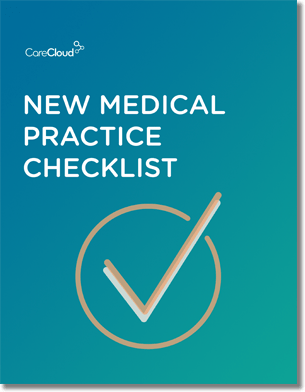Whereas Stage 1 of meaningful use basically determined whether quality data could be reported out of an electronic health record, Stage 2 demands that physicians select clinical decision support interventions to actually help achieve quality measurement goals. And that won’t be easy.
Indeed, using an electronic health record in advanced clinical processes is a “major ask” of office-based physicians, according to Peter Basch, MD, chairman of the American College of Physicians’ Medical Informatics Committee.
“Read the 64 measures, understand them, and know what constitutes the denominator and numerator. You’ve gotten past the basics in Stage 1, and now you’ll select — based on your specialty and scope of practice — nine measures inappropriate domains or your own compilation of nine measures,” Basch told Medical Practice Insider. “These are the nine conventions you’ll use to either maintain excellence in outcomes or improve outcomes.”
Once you’ve selected your baseline measures and corresponding decision support interventions, you can begin to measure the effectiveness of process or workflow changes in your office. That data should help you answer the question, “Is this the best I can do? And, if not, why?”
Basch noted that medical practices might not get the expected results for any of three reasons:
1) Choosing the wrong measures for your practice. “Maybe you really didn’t understand what a measure entailed,” explained Basch, “and now that you’ve reread it, it doesn’t make sense for your practice.”
For instance, the patient reminder metric measures the number of unique patients within the past 24 months who appear to have unmet preventive care or chronic care need.
“One of my concerns is if a provider is not in a field that does preventive or chronic care management, there actually may be nothing to remind patients to do,” said Basch. “The metric is limited to communications that may be outside of what one would do during a typical day’s work. Reminding the patient that day — giving them an order or giving them a handout that reminds them to do something — doesn’t count as a reminder. It has to be called or sent to the patient outside the realm of an office visit. You could probably make this work, but it’s not what one would necessarily intuit as making the most sense in providers’ workflow.”
2) Trying to use the EHR to demonstrate higher quality when the EHR is not set up to capture the appropriate data.
For example, one measure requires doctors to provide patient-specific educational resources for 10 percent or more of unique patients seen during the reporting period. That seems like a reasonable level, but note that an EHR must identify the need for the materials. Can your EHR generate educational material based on information in the problem or medication lists?
Or perhaps you’re thinking of setting a trigger for materials whenever you see a patient with a new diagnosis. If you follow that strategy consistently, would you surpass the 10 percent mark? “It’s actually very difficult to determine that,” Basch explained. “You certainly don’t want to be counting handouts as you move forward in the measurement period.”
3) You may like a certain quality measure, but do not have the resources to make it work.
The summary-of-care record measure, for instance, states that more than 10 percent of transitions and referrals must be transmitted electronically using either the Direct or Nationwide Health Information Network (NwHIN) protocols.
During the course of 2014, as providers are scrambling to implement technology, they also have to make sure that either they or their vendors have implemented these electronic communication protocols. “The pathways must be established and integrated into the workflow in such a way that during the typical busy course of one’s day, one remembers to use them,” Basch said, adding that the government is basically asking doctors to use a communications vehicle when many do not know what Direct is.
In each of these cases, the challenge for doctors is moving beyond the basics of how to use EHRs. “Doctors have to get over that,” Basch continued. “They have to get into the hard work of using the tools so that they can make care better. That’s where the payback will come.”
Frank Irving is the Editor at Medical Practice Insider, a publication of MedTech Media that provides business and technology intelligence to forward-thinking medical practices.

Do you know what you need when setting up a new medical practice?

